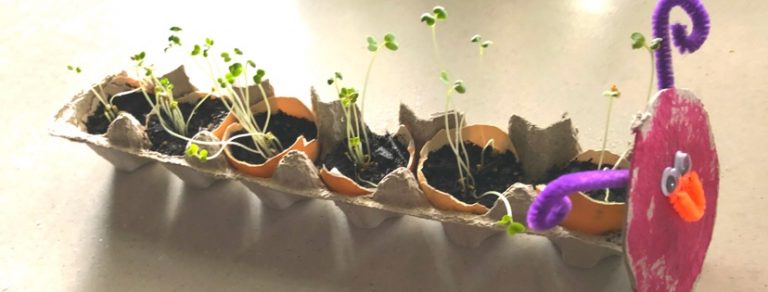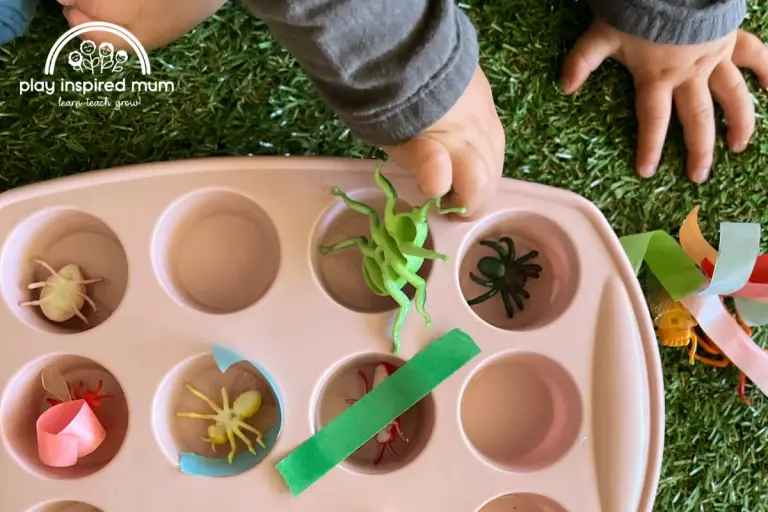Hidden Colours Bicarbonate Soda Vinegar Experiment
Disclosure: This blog contains affiliate links which I may earn a small commission from if you purchase through them, at no extra cost to you.
The Hidden Colours Experiment is a fun way to explore chemical reactions.
All you need are two common household items to create a chemical reaction that will make everything look different all of a sudden!
The bicarbonate soda and vinegar hidden colours experiment requires only three ingredients that everyone has at home, which is why it’s such a great way to engage kids in science.

Bicarb Soda and Vinegar Hidden Colours Experiment
When it comes to science, exploration is key. By exploring the world around them, kids can learn about the principles that govern our physical universe. And when it comes to exploring science concepts, there’s no better way to do it than with a fun and interactive experiment like the Bicarbonate of Soda and Vinegar Hidden Colours Experiment.
This experiment is a great way to get kids interested in science and chemistry. It’s also a fun way to teach them about how molecules interact with one another. With just a few common household items, you can create a reaction that will produce an instant reward! All while refining and strengthening their fine motor skills and hand eye coordination along with other valuable skills.
- What you need to create hidden colours experiment
- Is bicarbonate of soda the same as baking soda?
- How to do the hidden colours experiment
- The chemical reaction that occurs when you mix bicarbonate of soda and vinegar together
- Learning opportunities

What you need to create the Hidden Colours experiment
In order to complete the Hidden Colours Experiment, you will need:
- Bicarbonate of soda
- White vinegar
- Food colouring
- Muffin tray
- Pipette or syringe
- Storage tub (optional)
- Waterproof Play Mat (optional – but fabulous)
If you are worried about the mess, simply pop the muffin tray into a low plastic storage tub to catch any over flow.
To further contain the aftermath, you cannot go wrong with a Rudie Nudie Playmat. They are waterproof, super absorbent and there is a size to suit your space perfectly! We have been using ours for over a year now. Water play on our carpeted play space has never been a problem, our mat has saved me from the damp grass down at the park and it washes so well! Most of the time I just pop it through a rinse cycle and hang to dry. The colours are still so vibrant and its ready for more play in no time!
The mixture is safe to touch and perfect for some messy play after the experiment has been completed. Add some cars or dinosaurs and see where the setting takes your child’s play!
Then from there, take your mess management to the next level by doing the entire experiment on a Rudie Nudie Play Mat

Is bicarbonate of soda and the same as baking soda?
Yes, bicarbonate of soda, also known as bicarb soda is the same as baking soda. The term used really depends on where in the world you happen to be. Australia, New Zealand and the United Kingdom will often to refer to this substance as bicarb whereas those in the United States will refer to it as baking soda.
How to do the Hidden Colours Experiment
1. Add a few drops of food colouring to each well of the muffin tray
2. Cover the food colouring with bicarbonate of soda
3. Using the pipette, drop the vinegar onto the bicarb
4. Watch the magic happen!
Would you like me to tell you what happens? Okay, I’ll tell you! The vinegar sizzles and bubbles as soon as it makes contact with the bicarb! Amongst all the movement, the colour get mixed into the chaos and erupt from below!
There is so much going on with just the addition of the vinegar! What colour is going to be next? Its so exciting! This activity is a favourite in our house as I am sure it will be in yours too!
The hidden colours experiment literally takes minutes to set up and it really packs a wow factor!

The chemical reaction that occurs when you mix bicarbonate soda and vinegar together
When you mix bicarbonate soda and vinegar together, a chemical reaction takes place. This reaction is caused by the acid in the vinegar and the alkalinity of the bicarb, which creates carbon dioxide gas. This gas causes the food colouring to become evident, amongst the hiss and fizzle of the bubbles created!
There is so much science happening here!
The reaction results in:
- Chemical change:
- Change of state: Solid and liquid are mixed to create a liquid and gas!
- pH balance: The vinegar(pH 2) is acidic and baking soda (pH 9) is alkaline. Mixing the two will result in a change of the pH depending on how much is mixed. Check out this pH experiment using purple cabbage here!
The Hidden Colours Experiment is a great way to show kids these reactions in action!
Do your kids love this experiment?
If your kids loved this home learning science experiment, they will likely love Fizzy dinosaur eggs too!
Get all the instructions to make fizzy dinosaur eggs at home here!

Learning Opportunities
This science experiment for kids is full of potential learning and development opportunities.
- Fine Motor Skills
- Hand Eye Coordination
- Crossing the Midline
- Cause and Effect
- Cognitive Development
- Colour Recognition
- Inquiry Based Learning

With some strategic positioning of containers, placing the vinegar opposite to the child’s dominant hand, they will cross their dominant hand across the middle of their body to refill their pipette.
This ‘crossing of the midline’ is an important skill that can be developed and practised through play!
Isn’t it great that us parents can make tiny adjustments that will have such a huge positive impact on you children learning!
This hidden colours science experiment is such a winner with kids of all ages! It really is such a great way of exposing your child to scientific concepts and play based learning!










